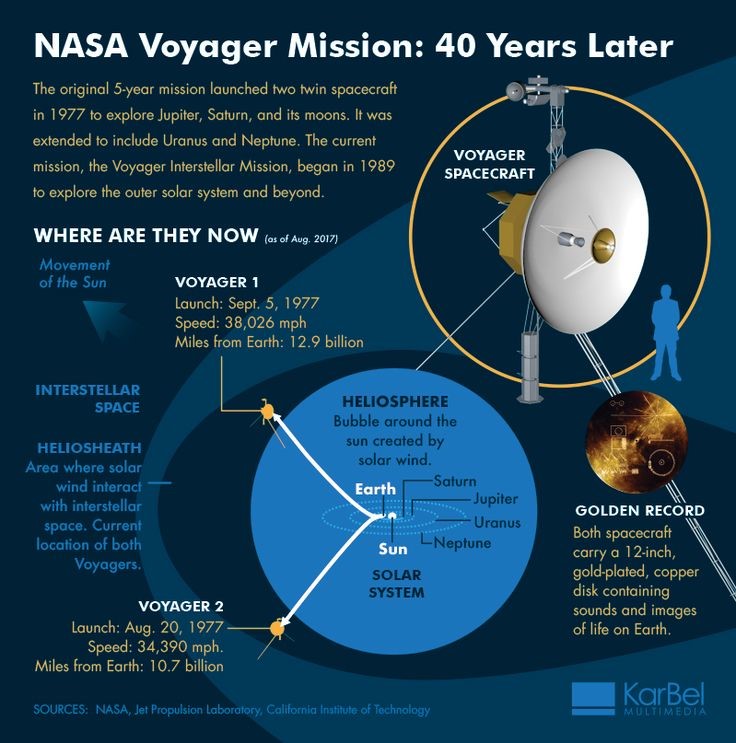[ad_1]
GS Paper 3:
Syllabus: Awareness in space.
Context:
NASA’s Voyager 1 is continuing its journey beyond our Solar System, 45 years after it was launched. But now the veteran spacecraft is sending back strange data, puzzling its engineers. A glitch is said to be behind this.
- The glitch has to do with Voyager 1’s attitude articulation and control system, or AACS, which keeps the spacecraft and its antenna in the proper orientation.
- Preliminary analysis suggests that the craft is confused about its location in space.
About Voyager mission:
- Launched in the 1970’s, and the probes sent by NASA were only meant to explore the outer planets – but they just kept on going.
- Voyager 1 departed Earth on 5 September 1977, a few days after Voyager 2 and left our solar system in 2013.
- The mission objective of the Voyager Interstellar Mission (VIM) is to extend the NASA exploration of the solar system beyond the neighborhood of the outer planets to the outer limits of the Sun’s sphere of influence, and possibly beyond.
- The Voyager spacecraft are the third and fourth human spacecraft to fly beyond all the planets in our solar system. Pioneers 10 and 11 preceded Voyager in outstripping the gravitational attraction of the Sun but on February 17, 1998, Voyager 1 passed Pioneer 10 to become the most distant human-made object in space.

Accomplishments so far:
Voyager 2 is the only probe ever to study Neptune and Uranus during planetary flybys.
It is the second man-made object to leave our Solar system.
Voyager 2 is the only spacecraft to have visited all four gas giant planets — Jupiter, Saturn, Uranus and Neptune — and discovered 16 moons, as well as phenomena like Neptune’s mysteriously transient Great Dark Spot, the cracks in Europa’s ice shell, and ring features at every planet.

What is Interstellar space?
Scientists use the heliopause to mark where interstellar space begins, although depending on how you define our solar system it can stretch all the way to the Oort Cloud, which begins 1,000 times farther away from the sun than Earth’s orbit.
The Heliosphere:
The heliosphere is a bubble around the sun created by the outward flow of the solar wind from the sun and the opposing inward flow of the interstellar wind. That heliosphere is the region influenced by the dynamic properties of the sun that are carried in the solar wind–such as magnetic fields, energetic particles and solar wind plasma. The heliopause marks the end of the heliosphere and the beginning of interstellar space.
InstaLinks:
Prelims Link:
- Voyager Missions.
- Voyager 1.
- Voyager 2.
- Heliosphere.
Mains Link:
Discuss the significance of Voyager Missions.
Sources: India Today.
[ad_2]

